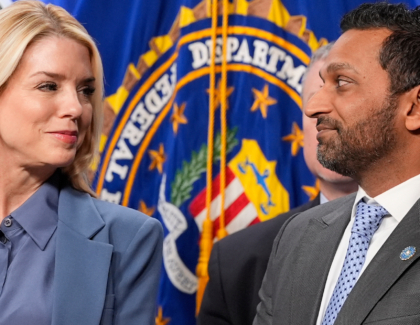Sign up for the daily CJR newsletter.
The jury is in: Bots played a huge role in promoting the spread of misinformation and disinformation during and following the 2016 campaign season. A just-released study from a group of scholars at Indiana University in Bloomington, which analyzed 14 million Twitter messages, finds that bots were more likely than humans to be “super spreaders” of fake stories, playing a crucial, early role in making certain stories go viral. Bots spread the stories through tweets, retweets, replies, and mentions. Bots will repetitively add @realDonaldTrump to a tweet with a false claim, for instance, to propel false stories to surface more often.
While this is not a eureka moment in the battle against fake news, it is compelling evidence that so-called “bot armies” are a cornerstone of the misinformation strategy. The study’s findings also suggest a path forward for the fight against fake news. If bots are able to take advantage of an ecosystem that rewards their sheer force of numbers, then disabling overactive bots would be a way to slow the spread of such claims. Researchers, including those at Indiana, are developing more reliable ways to detect whether a particular account is a bot or not. The study I described above relies on a tool called a Bot-o-meter, which scores Twitter accounts based on how likely they are to belong to a human.
This story also comes after the recent controversy in the Gulf between Saudi Arabia and Qatar, in which bot armies promoted smear campaigns against Qatar and Al Jazeera. As David Carroll pointed out: “[Bot armies are a] global problem deployed as info ops against media outlets.” BahrainWatch.org provides a fascinating list of propaganda bot networks and hashtags involved.
Elsewhere in bot news:
- PerimeterX, a cybersecurity company, raised $23 million to discover and fight bots online, reports Fortune.
- Meanwhile, Twitter says it is having success on the online harassment front, both in stopping abusive users and hiding abuse from its targets. But, as The Verge points out, Twitter isn’t yet providing real data to back it up.
- Fake news’ cousin is fake ads, which trick companies into buying space on their ghost-town websites, among other ways. Google has been quietly investigating how bad the problem is, and testing a potential solution.
- Are big tech companies to blame for “the decline of workers’ share of national income, the rise of inequality, the decrease in business startups, the dearth of job creation, and the fall in research and development spending”? asks Bloomberg’s Paula Dwyer.
Other notable stories
- Vice has an excerpt from Nobel Laureate Svetlana Alexievich’s new book on the forgotten role of female soldiers in WWII. The excerpt tells the story of a female sniper.
- “In 2015, NBC fired Trump. …. By 2017, the media was his enemy.” In “The TV That Created Trump,” The New Yorker’s Emily Nussbaum rewatches The Apprentice.
- Journalist Katherine Boo has 15 rules for narrative nonfiction at Nieman Storyboard. Rule #13: “Even if I’m telling urgent stories, I can still experiment with form and make it a creative process.”
- ICYMI: Last week Thomas Frank wrote a fiery take in The Guardian on the media’s war with Trump. Frank condemns the homogeneity of the press, calling it not liberal but privileged.
- For laughs, CJR’s Meg Dalton came across “People of Local News,” a Tumblr that collects screenshots of TV news chyrons and the people featured with them.
Correction: This post previously identified Svetlana Alexievich as winner of a Pulitzer.
Has America ever needed a media defender more than now? Help us by joining CJR today.







